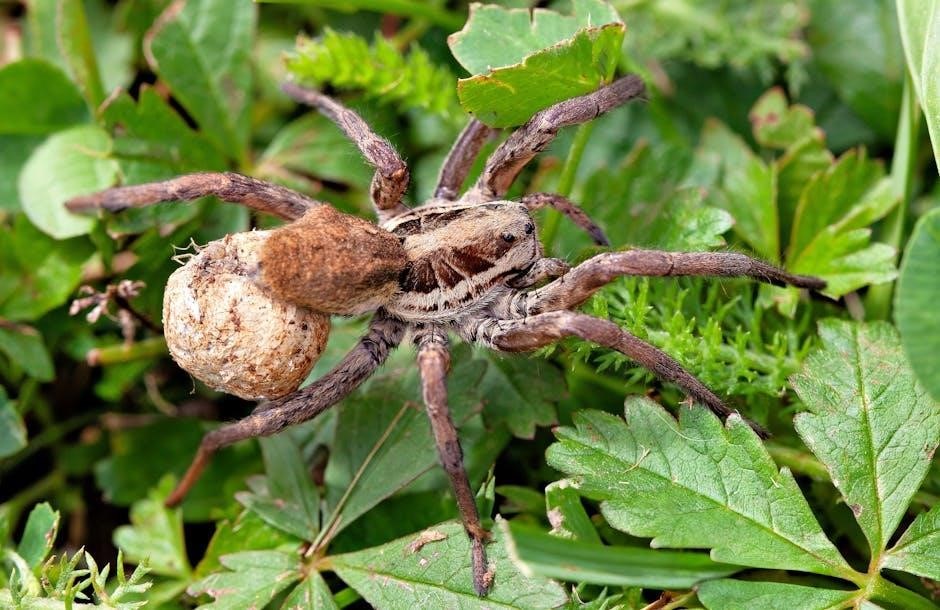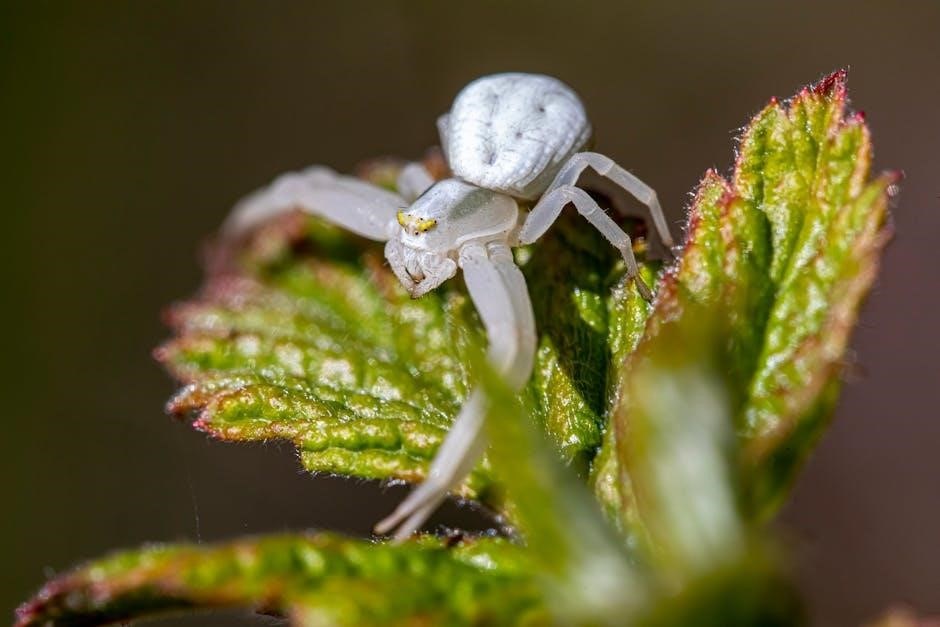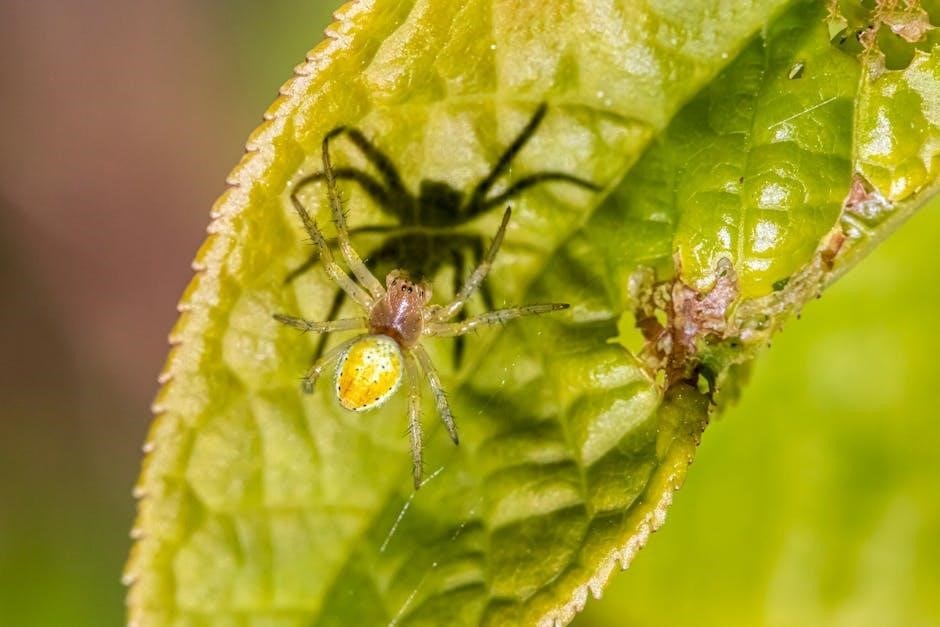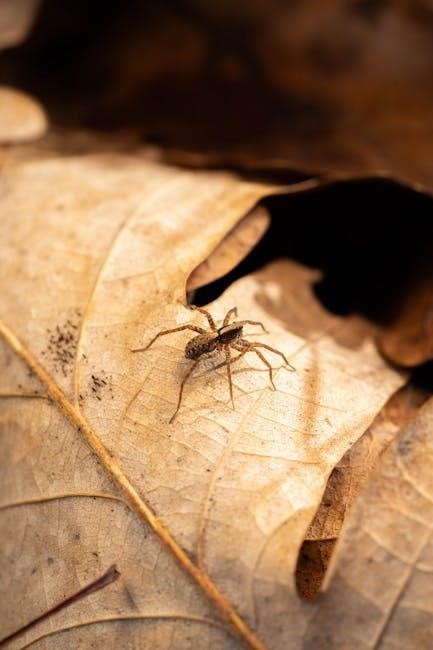The Legend of the Christmas Spider: An Overview
The Legend of the Christmas Spider is a heartwarming Eastern European folktale. It explains one possible origin of tinsel on Christmas trees. The story features spiders transforming into holiday heroes and bringing good fortune to families.

Origins and Prevalence
The legend is rooted in Eastern European Christmas folktales. It is notably prevalent in Western Ukraine and Germany. The story explains the possible origin of tinsel and the spider’s role as a holiday hero.
Eastern European Folktale
The Legend of the Christmas Spider is an Eastern European folktale. It explains a possible origin of tinsel on Christmas trees. The tale has variations across cultures, but the core narrative remains consistent. It often involves a poor family, friendly spiders, and a Christmas miracle. The spiders weave webs on the tree. Then, the webs transform into silver and gold, bringing joy and good fortune. The legend portrays spiders as non-monsters. It emphasizes gratitude and the beauty found in unexpected places. This charming tale is often passed down through generations during the holiday season.
Regional Variations: Ukraine and Germany
The Christmas Spider legend finds particular prevalence in Western Ukraine and Germany. Ukrainian traditions often include spider-shaped ornaments as part of Christmas decorations. These ornaments symbolize good fortune and the miracle of the transformed webs. German versions of the tale often depict a mother cleaning for Christmas. Spiders flee to the attic to escape her broom. Later, they decorate the tree. In both regions, the story serves as a charming explanation. It explains the presence of tinsel and a reminder of unexpected blessings. The tale highlights cultural nuances while sharing a common theme of festive magic.

The Core Narrative
The core narrative revolves around a poor family and Christmas spiders. Spiders decorate the family’s tree with webs. A Christmas miracle transforms webs into silver and gold tinsel, bringing joy and prosperity.
The Poor Family and the Christmas Tree
The story often begins with a widowed mother and her children. They are struggling financially during the Christmas season and cannot afford decorations. They find a small fir tree and bring it inside their humble home. Despite their poverty, the children are filled with joy and hope for a Christmas miracle. The family does their best to prepare for the holiday, unaware that tiny guests are about to transform their meager tree into a dazzling spectacle. The anticipation of the Christmas Angel’s blessing fills the air, even amidst their difficult circumstances.
The Spiders’ Role
As the poor family sleeps on Christmas Eve, spiders, who had sought refuge in the attic, emerge. They are drawn to the undecorated Christmas tree, longing to see the Christ Child. Out of curiosity and kindness, the spiders begin to explore the tree. They spin intricate webs from branch to branch, covering the entire tree with their delicate silk. They work diligently through the night, unaware that their actions will lead to a magical transformation. The spiders’ innocent desire to witness the Christmas miracle sets the stage for the story’s enchanting climax.
The Miracle of Tinsel
On Christmas morning, the first rays of sunlight stream through the windows, illuminating the Christmas tree. The light touches the spiders’ webs, transforming them into shimmering silver and gold. The webs are no longer plain silk; they are now beautiful, sparkling tinsel. This transformation is a Christmas miracle, a reward for the spiders’ kindness and curiosity. The once bare tree now gleams with festive decorations, bringing joy and wonder to the poor family. The miracle of tinsel forever links the spider to Christmas celebrations, symbolizing hope, creativity, and the magic of the season.

Symbolism and Meaning
The legend carries rich symbolism. It represents good fortune, creativity, and the magic of Christmas. It is a reminder that even the smallest creatures can bring great joy and transform the ordinary into something extraordinary.
Good Fortune and Creativity
The Christmas spider is often seen as a symbol of good fortune and creativity. Families who embrace the legend believe that including a spider ornament on their tree will bring blessings. It is believed to inspire creativity throughout the holiday season and the coming year. The transformation of spiderwebs into silver and gold represents the potential for turning something ordinary into something beautiful. This encourages one to find beauty in unexpected places. It symbolizes the ability to create magic even in the most humble of circumstances, making the Christmas season more special.
Christmas Miracle
The legend of the Christmas spider emphasizes the spirit of a Christmas miracle. It illustrates that even the smallest creatures can bring about significant change. The transformation of the spiderwebs into glittering tinsel is a magical event, a true Christmas miracle. This miracle happens due to the spiders’ kindness and curiosity. The legend shows the power of kindness and gratitude. It reminds us that miracles can occur when we least expect them. The story is a symbol of hope and the transformative power of the holiday season, making it a cherished tale.

Variations and Interpretations
The Legend of the Christmas Spider has several variations. These depend on the region and the storyteller. Common interpretations include the spider saving Baby Jesus and the theme of two mothers caring for their children.
Spider Saving Baby Jesus
One variation of the Christmas Spider legend tells a tale of a baby spider. This spider bravely saves the life of Baby Jesus during the Holy Family’s flight to Egypt. This event occurs shortly after Jesus’ birth. In this version, the spider becomes a protector. It demonstrates courage and selflessness. The spider uses its web to shield Jesus from danger, highlighting the potential for unexpected heroes. This interpretation adds a religious dimension. It connects the spider to the core narrative of Christmas. It emphasizes themes of faith, protection, and divine intervention within the holiday story.
Two Mothers: Human and Spider
Another version of the Christmas Spider story highlights the parallel struggles of two mothers. One mother is a peasant woman. The other is a mama spider. Both are working hard to provide for their young children. On Christmas Eve, the human mother brings home a small fir tree. Unbeknownst to her, a spider had made its home there. This version emphasizes empathy and shared experiences. It highlights the universal theme of motherhood. It shows the dedication and sacrifice that mothers make for their children, regardless of species. The story connects the human and animal worlds through this shared maternal bond.
Modern Adaptations and Representations
The Legend of the Christmas Spider continues to inspire modern adaptations. These include spider ornaments and children’s books. These keep the folktale alive. They also introduce new generations to its charming narrative.
Spider Ornaments
Spider ornaments are a tangible representation of the Legend of the Christmas Spider. These ornaments often adorn Christmas trees. They serve as a reminder of the tale’s message of miracles and good fortune. Many families include these ornaments in their holiday decorations. They believe it will bring creativity and blessings. These ornaments are often handcrafted, adding a unique and personal touch to the celebration. The ornaments symbolize the spiders’ role in transforming a simple tree into a magical display. Spider ornaments serve as a festive symbol of hope and the magic of Christmas, echoing the folktale’s enduring appeal.
Children’s Books
The Legend of the Christmas Spider has been adapted into several children’s books. These books aim to share the heartwarming tale with young audiences. They often feature colorful illustrations to captivate children. The books simplify the story, emphasizing themes of kindness and miracles. Some adaptations focus on the spiders’ perspective. They highlight their desire to witness the Christmas magic; These books ensure the folktale remains accessible to new generations. Miriam Monett used the legend in her book. It’s called “The Christmas Spider: the Nativity Story Retold for Children.” These books teach children about gratitude and finding beauty in life.
Cultural Significance
The legend holds cultural importance, particularly in Eastern Europe. It explains the origins of tinsel on Christmas trees. The spider transforms from a common creature into a holiday hero. It represents good fortune and creativity.
Connection to Tinsel Tradition
The Legend of the Christmas Spider directly explains the tradition of using tinsel on Christmas trees. According to the tale, spiders, after admiring a family’s Christmas tree, left webs on its branches. As a Christmas miracle, these webs transformed into shimmering silver and gold strands. This event inspired the use of tinsel as a decoration to represent the transformed spiderwebs. The tale also reinforces a theme of gratitude and finding beauty in unexpected places. It ties a common decoration directly to a mythical origin, adding depth and meaning to the holiday tradition.
Spider as a Holiday Hero
Within the legend, spiders transition from mere creatures to holiday heroes, playing a pivotal role in bringing festive cheer. They are portrayed as curious and kind, admiring the Christmas tree and wishing to participate in the holiday spirit. Their webs, initially perceived as insignificant, transform into beautiful tinsel through a Christmas miracle. This transformation elevates the spider’s status. They become a symbol of hope, good fortune, and the magic of Christmas. The tale reframes spiders, often feared or disliked, into benevolent beings. They are capable of bringing joy and wonder to those who welcome them.
